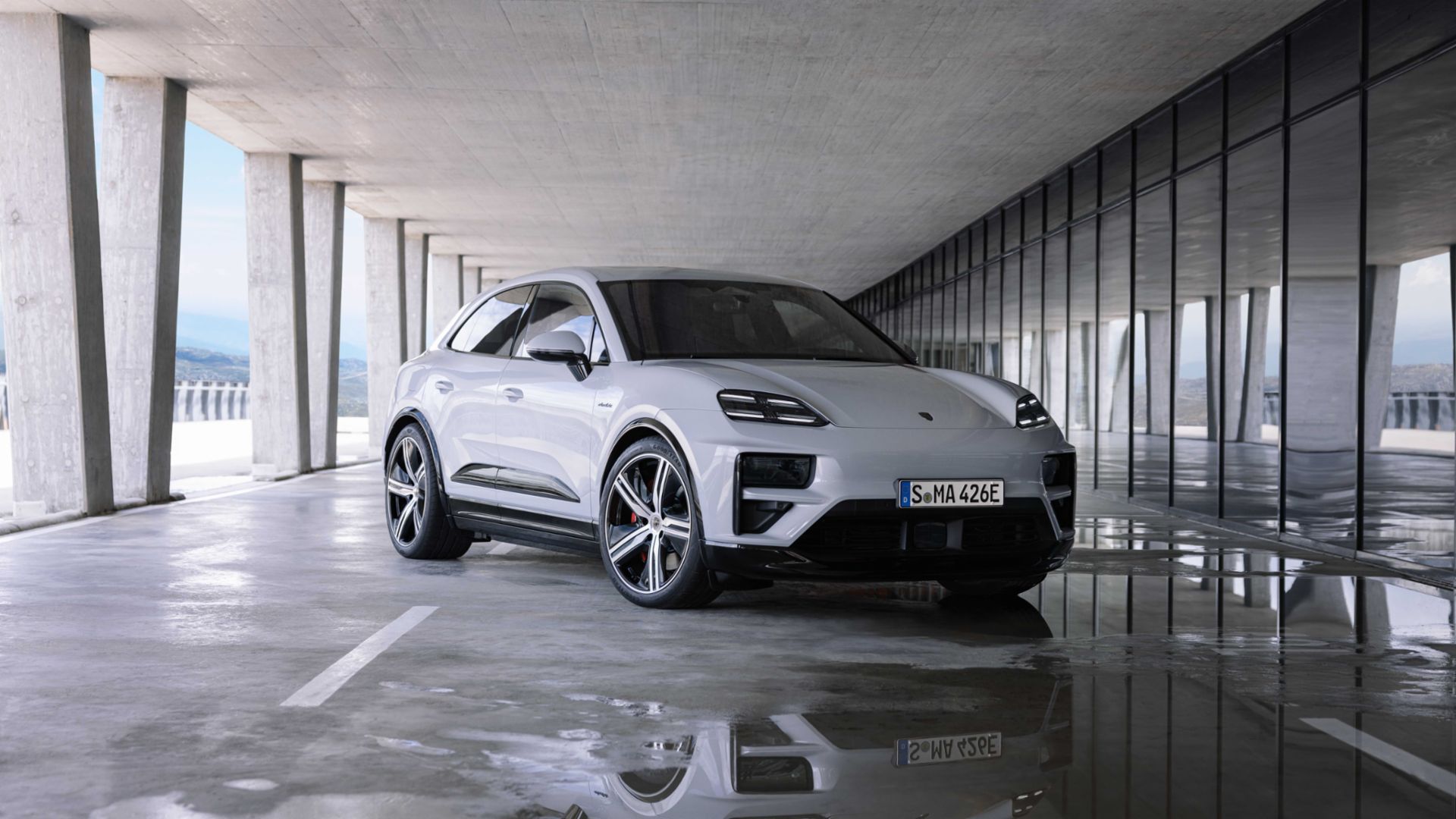
Porsche has finally revealed key details on its upcoming electric Macan. The SUV, which is to be the second all-electric vehicle in the German manufacturer’s lineup, aims to match “Sports-car-like performance figures” with “high-performance fast charging.” It comes in two flavors, the basic Macan 4 and the high-performance Macan Turbo. As you may expect, performance is balanced out against range and price. The company has also revealed that customers will begin receiving the electric Macan in late 2024 — with prices starting at $80,450.
Get your foot down, and the Macan Turbo certainly seems like it will have that Porsche feeling — accelerating from 0-60 in just 3.3 seconds. The Macan 4 is a little tamer, taking 5.2 seconds to reach the 60 mph milestone. It’s still impressive for an SUV, but faces lots of stiff competition in the EV world. Top speed caps out at 162 mph for the Turbo, and 124 on the Macan 4. Other notable features include air suspension and optional rear-wheel steering.
With an estimated range of up to 613 km (380 miles) on the Macan 4, Porsche’s SUV isn’t too far behind some of EV market’s class leaders. The range does drop slightly if you opt for the Turbo, but not by much. The more powerful edition can go up to 591 km (367 miles) before its battery depletes. What may set the vehicle apart is its 800-volt architecture, which allows the Macan’s battery to go from 10% to 80% charge in as little as 21 minutes. It shares said architecture with the Taycan, and hints that 10-80 times are just as important as 0-60 times in Porsche’s eyes.

Scaling up the sportiness
While a Porsche’s performance has always been a major selling point, that’s not the only reason fans have remained loyal to the German car maker over the years. The vehicles they make have to both look good and look like a Porsche, lest the company find itself in some kind of Porsche 996 situation again. Michael Mauer, who is the Vice President of Style Porsche, claims, “The new Macan is clearly recognizable by its brand identity as part of the Porsche product family.”
Aesthetics were clearly high on Porsche’s agenda when it came to the new Macan. The company boasts about focusing on “Sporty proportions and coupé-like lines.’ The front is definitely Porsche-like and reminiscent of sportier models like the 911, while the rear is more practical and Cayenne-like. Still, it’s a lot less “Porsche” than other models in its lineup. Fans of the traditional Porsche aesthetic may not like this forward-thinking design ethos. Though it still looks like a Porsche, die-hards won’t be happy.
We saw the same thing with BMW’s push toward electrification. The elongated grilles on new electric BMWs have been dubbed “beaver teeth” by fans, a subtle jab acknowledging that while the kidney grilles are clearly a BMW mainstay, many dislike how BMW has adopted them in its push toward a fully electric lineup.
To our eye, the Porsche Macan EV front-end is obviously very Porsche but more modest than previous models.
Beyond aesthetics, Macan’s design is a clear statement of intent. Yes, the Lucid Air and Tesla Model S put up impressive numbers, but if you want a sporty EV there’s another place to turn. There’s also a practical element; the Macan is very aerodynamic, with a drag coefficient of 0.25. This bolsters performance and further extends the vehicle’s range, at least conceptually.
Sports-driving prowess aside, there’s also the practical element to consider. People buy SUVs for a reason, and Porsche is aiming to deliver on storage space. An 84-litre “frunk” and 540 litres behind the rear seat means there’s plenty of room in the Porsche SUV. If you need even more, dropping the rear seats ups the storage space to an impressive 1,348 litres. There’s also a two-metric ton towing capacity. Plus, if you’ve read all of this and you still aren’t sold then there’s still the upcoming hybrid 911 to consider.



